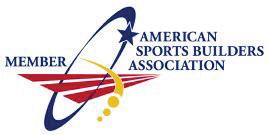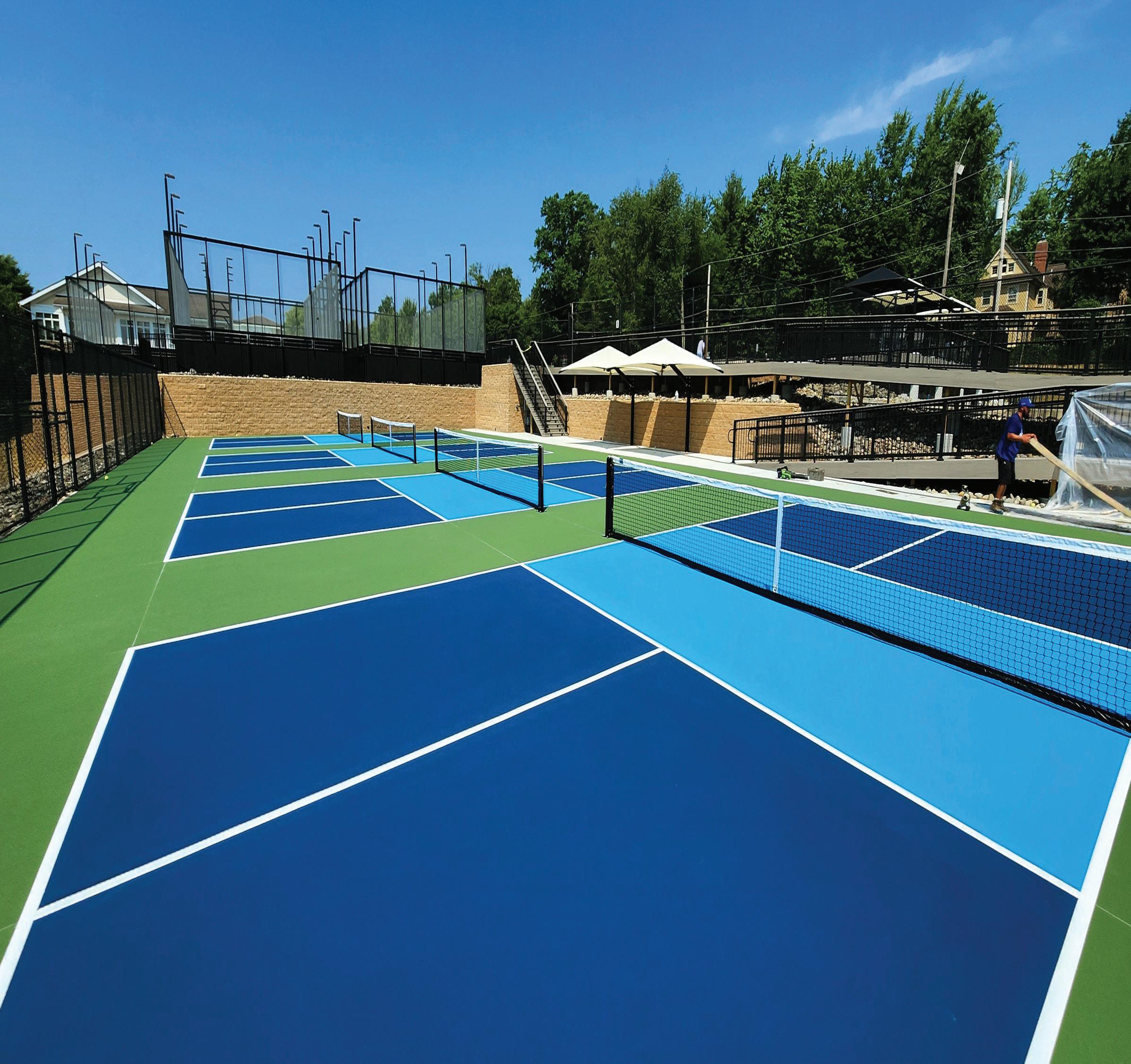How AI tech is being used to improve coaching
Continuing our celebration of the best in pickleball providers
Red Ball Tennis is poised to bring in players of all ages
Are you looking to string at tournaments?

How AI tech is being used to improve coaching
Continuing our celebration of the best in pickleball providers
Red Ball Tennis is poised to bring in players of all ages
Are you looking to string at tournaments?
Throughout the country, local NJTL chapters are delivering education, tennis and life skills.

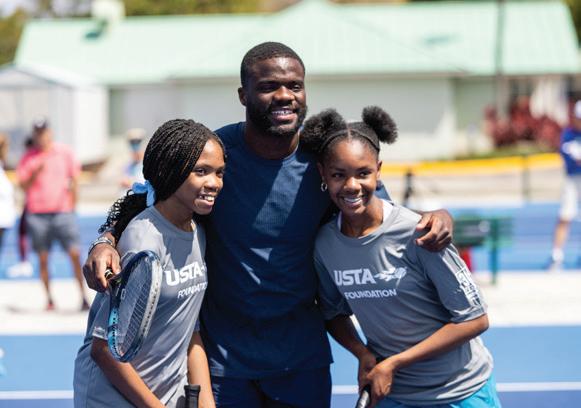



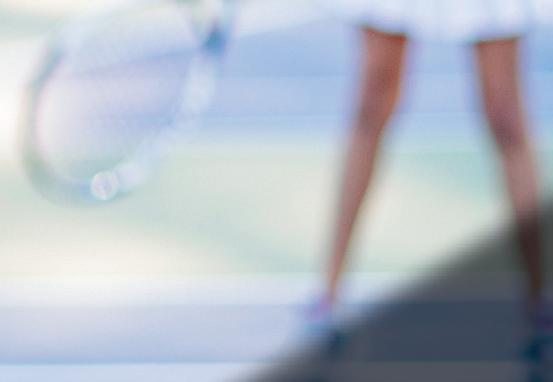














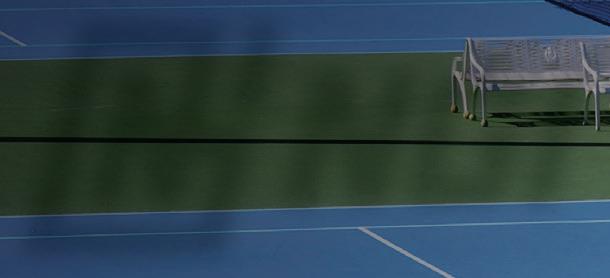




The best crack repair method available. The Shield covers the entire court & is guaranteed to protect your surface from cracks.


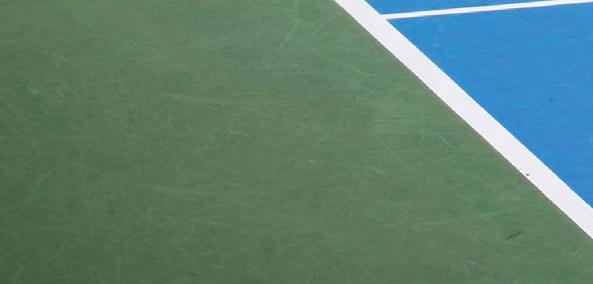





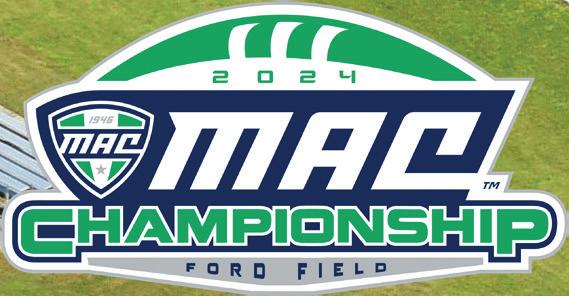












The official surface of the 2024 MAC Championship, now available with a 15 year warranty.










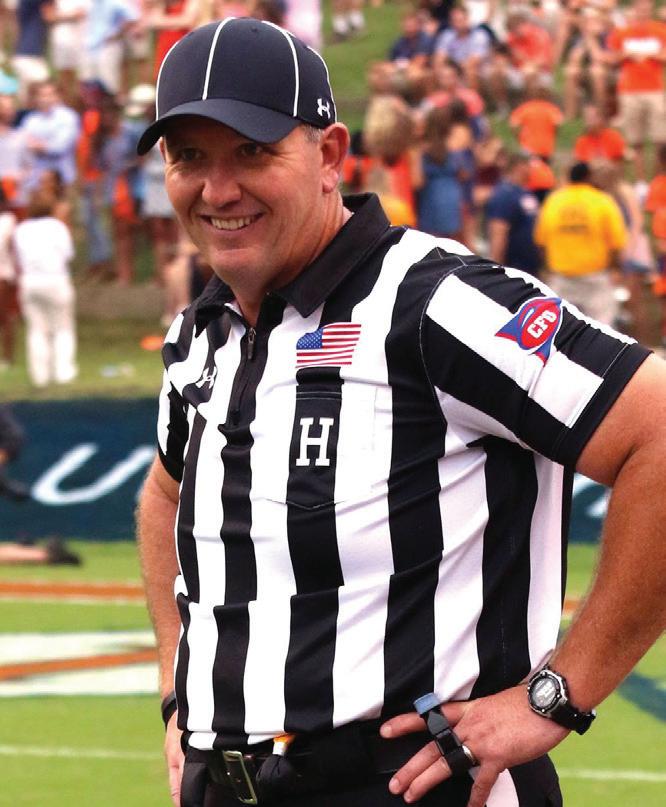
Lynch has also served as a college football official for the past 25 years.
Har-Tru has partnered with Wilson to develop a first-of-its-kind pickleball specifically for clay courts. The company says it spent months testing the ball with players and gathering feedback on how it performs on soft, slower surfaces.
“We tested 12 different versions across three rounds of play with players of all skill levels—measuring bounce height, feel off the paddle, spin and overall satisfaction. The most popular ball (Sample 2) was a standout,” the company said. The ball was chosen as the favorite by 85 percent of testers, and it rated highest for bounce consistency and feel off the paddle. The bright yellow ball meets all USA Pickleball standards.
Court building industry veteran Tracy Lynch has joined AT Sports Inc. as the new vice president of business development. Lynch has been with Har-Tru for the last 27 years, most recently as vice president of sales and marketing.
“Tracy brings a proven track record of success and a strategic mindset that will help drive growth,” says AT Sports President Brad Carroll. “His leadership and experience align seamlessly with our mission to deliver excellence, and we’re eager about the impact he will make as we move forward into new markets and global expansion.”
Lynch, who won RSI’s Sales Rep of the Year Award in 2009, will work from the Charlottesville, Va., area, where he resides. AT Sports is based in Atlanta.
“It's been remarkable to observe the progress and energy that AT Sports has generated in the industry over the past few years,” Lynch says. “The prospect of joining a company like AT Sports and shifting from sales to business development is truly thrilling.”
The Racquet Sports Professionals Association has announced its further global expansion with the assistance of Nelson Artz (below left, with RSPA CEO Brian Dillman), the newly appointed managing director for Europe, the Middle East and Africa. The expansion is designed to

provide racquet sports professionals in these regions with professional development opportunities.
Artz began his career as a tennis coach and was among the pioneers to study the emerging field of sports management more than 30 years ago. His international career includes serving as global director of retail, promotion and grassroots at Wilson Racquet Sports, a brand with which he has maintained a strong 30-year relationship. He is also the founder of the Nelson Artz Group GmbH & Co. KG, a marketing and brand development agency that collaborates with numerous national and international brands in sport, leisure and tourism.
“Nelson's extensive knowledge and experience in both the coaching and business aspects of racquet sports are invaluable as we embark on our global expansion,” says RSPA CEO Brian Dillman. “His leadership will be instrumental in establishing the world's largest racquet sports professional association and enhancing racquet sports careers and experiences worldwide.”
The University of Florida’s Department of Sport Management has restructured its accredited racquets industry education program and is adding a new course focused on personal career development.
The new offering, “Personal Brand Management for the Racquets Industry,” is a four-module, self-paced online course designed to help professionals market themselves. Len Simard, search executive from Kopplin, Kuebler and Wallace, will serve as the adjunct professor. It’s open to all industry professionals with no admissions procedure required.
In addition, the university is restructuring its Director of Racquet Sports (DORS) Certificate Program into a multi-course format. Both courses are online and selfpaced. Adjunct professors include industry veterans Doug Cash and Ajay Pant.
• Director of Racquet Sports Course
#1: "Facilities, Operations, Marketing and More in the Era of Multiple Racquet Sports," which launches in July.
• Director of Racquet Sports Course #2: "Leadership, Management and Finance," which launches in September and requires completion of Course #1 and five years of experience.
“This transformation is about expanding access and providing a clear development path for professionals at all levels,” says Program Director Kim Bastable. “We’re addressing what students have told us they need—more feedback and coaching and broader eligibility—while maintaining the leadership focus our program is known for.” For more information, visit www.UFDORS.com.
Chps.
California Sports Surfaces, a brand of ICP Group, has extended its longstanding partnership with the Minto US OPEN Pickleball Championships through 2029 as the Official Court Surface of the event.
CSS has supplied the surface for the tournament since its inception in 2016. In previous years, DecoTurf was the surface of choice, but for the 2025 event, held April 26-May 3, the surface was CSS’s CoolTop, designed to reduce surface temperatures on acrylic athletic courts through advanced solar reflectance, says the company. The event is played on 60 courts at East Naples Community Park in Naples, Fla.
The Breakers Palm Beach Resort in Florida recently opened its renovated tennis and racquet facility with 16 new courts, including the first-ever hydroponic grass courts. The turf-grass selection for this new court technology is Platinum TE Paspalum.
The $12 million redesign of the complex now showcases three sports— tennis, pickleball and padel—on three surfaces (grass, clay hydro, and cushioned hard court). The four new grass courts were constructed using the proprietary technology of CapillaryFlow, a hydroponic system for subsurface irrigation and drainage.
Platinum TE Paspalum is the turfgrass used for the resort grounds, as well as for golf fairways, roughs and tees, while CapillaryFlow is utilized in each golf bunker. Mark Reid, director of Golf and Grounds Maintenance at The Breakers, had the idea to incorporate the high-performance paspalum turfgrass with the hydroponic system, which created the design foundation for the new grass tennis courts. CapillaryFlow is a closed-loop system consisting of an impermeable liner, drainage gravel, patented pervious cement, water basins with pumps, and a sand layer over which natural grass grows.

PUBLISHER
BILL SIMON
EDITOR
PETER FRANCESCONI
MANAGING EDITOR SCOTT GRAMLING
CREATIVE DIRECTOR IAN KNOWLES
SENIOR EDITOR ED M c GROGAN
ART DIRECTOR
CRHISTIAN RODRIGUEZ
SPECIAL CONTRIBUTOR BOB PATTERSON
CONTRIBUTING EDITORS
KIM BASTABLE, CYNTHIA CANTRELL, PEG CONNOR, JOE DINOFFER, JUDY LEAND, GREG MORAN, KENT OSWALD, CYNTHIA SHERMAN, MARY HELEN SPRECHER, JOE TEDINO
CONTRIBUTING PHOTOGRAPHER DAVID KENAS
EDITORIAL DIRECTION 10TEN MEDIA
RACQUET SPORTS INDUSTRY 60 East 42nd St., Suite 740, NY NY 10165 peter@acepublishinggroup.com
ADVERTISING DIRECTOR
JOHN HANNA 770-650-1102, x125 hanna@knowatlanta.com
APPAREL ADVERTISING
CYNTHIA SHERMAN
203-558-5911 cstennisindustry@gmail.com
Racquet Sports Industry is published 10 times per year: monthly, January through August with combined issues in September/October and November/ December, by Tennis Channel, Inc., 60 East 42nd St., Suite 740, New York NY 10165. Periodical postage paid in New York, NY and at additional mailing offices (USPS #004-354). June 2025, Volume 53, Number 6 © 2025 by Tennis Channel, Inc. All rights reserved. Racquet Sports Industry, RSI and logo are trademarks of Tennis Channel, Inc. Printed in the U.S.A. Phone advertising: 770-650-1102 x 125. Phone circulation and editorial: 917-817-0896. Yearly subscriptions $25 in the U.S., $40+ elsewhere. POSTMASTER: Send address changes to Racquet Sports Industry, 60 East 42nd St., Suite 740, New York NY 10165. Racquet Sports Industry is the official magazine of the USRSA, RIRG and ASBA.
Looking for back issues of Tennis Industry/Racquet Sports Industry? Visit the archives at our website at TennisIndustryMag.com for free digital versions.



Thirteen individuals and organizations— all advocates for the sport of tennis at the grassroots—were honored with national awards at the recent 2025 USTA Annual Meeting and Conference in Carlsbad, Calif. (Read more on each winner at usta.com. * = awarded posthumously)
• Adaptive Tennis Award: Waco Tennis Association (Waco, Texas)
• Barbara Williams Award: Bonnie Vandegrift (Asheville, N.C.)
• Brad Parks Award: Lynn Bender (Zeeland, Mich.)
• Eve Kraft Community Service Award: Scott Hanover (Gladstone, Mo.)
• Family of the Year: The Wheaton Family (Excelsior, Minn.)
• Janet Louer JTT Organizer of the Year: Mark Robbins (Smithville, Miss.)
• League Volunteer Award: Helen Bohlen Jeter* (Greer, S.C.)
• Member Organization of the Year Award: Dallas Tennis (Dallas)
• Senior Service Award: Sue Bramlette (Bluffton, S.C.)
• NJTL Founders’ Service Award: Richard and Eleanor Brenner* (First Serve, Santa Fe, N.M.)
• NJTL of the Year Award: MaliVai Washington Youth Foundation (Jacksonville, Fla.)
• Volunteer Exceptional Service Award: Rex Maynard (Belton, S.C.) and Robin Jones (Cary, N.C.)
On April 7, Billie Jean King became the first woman to receive a star on the Hollywood Walk of Fame in the new sports entertainment category.
"The important thing is, I don’t want to be the last one," the Hall of Famer said during a ceremony that was attended by US Open tournament director Stacey Allaster, Magic Johnson, actress Jamie Lee Curtis, Maria Sharapova, Rosie Casals, Ilana Kloss and other special guests.
"Remember, my star is your star," King added, echoing her line from the 2006 dedication of the USTA Billie Jean King National Tennis Center: "Mi casa es su casa!"
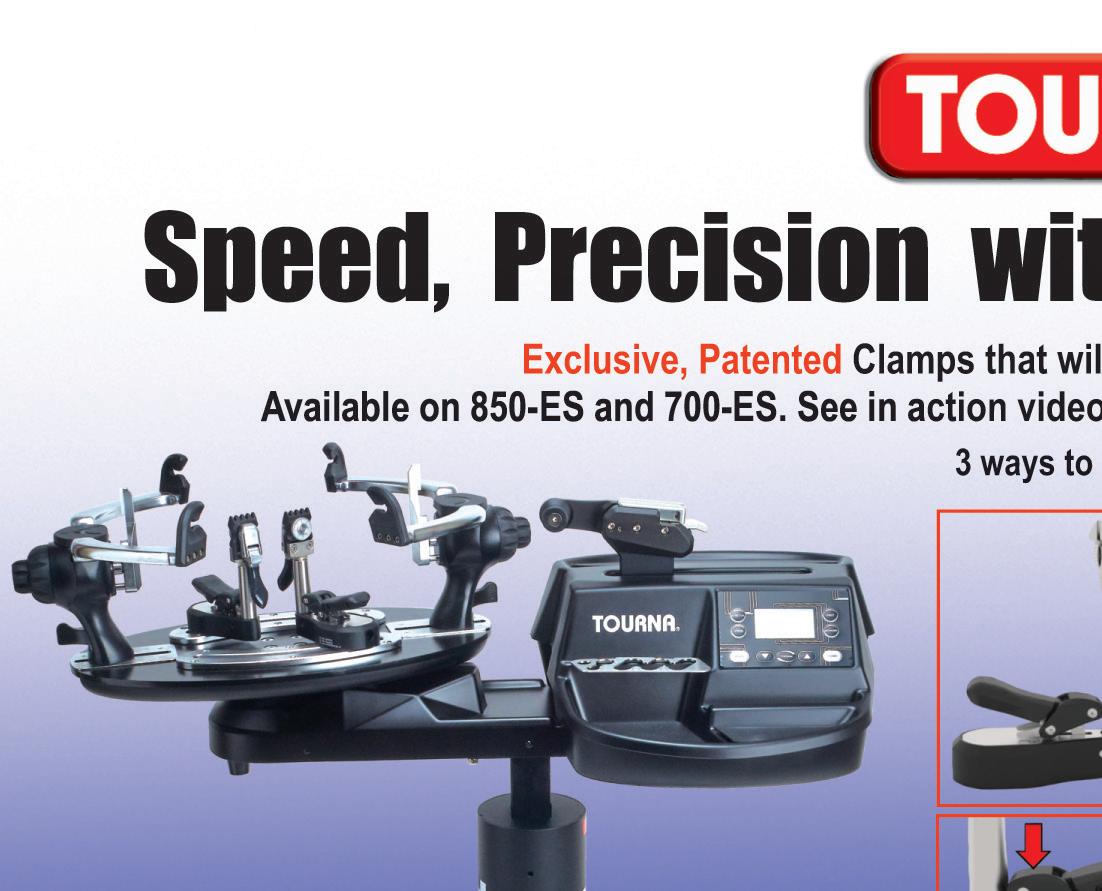




Aproposed $65 million state-ofthe-art nonprofit racquet/paddle sports complex in Louisville, Ky., is expected to help breathe new life into the historic Louisville Tennis Center at Joe Creason Park.
The development is being led by the newly formed nonprofit Kentucky Tennis & Pickleball Center Inc. (KYT&PC), along with local tennis and pickleball advocates and Louisville business leaders. Plans call for 12 indoor and 24 outdoor tennis courts and 14 indoor and four outdoor pickleball courts, to be used for competitive and recreational play and serve as a community hub. If






















approved, project leaders anticipate construction will begin by 2027, with the complex opening in 2028.
KYT&PC is seeking approval to lease 25 acres at Joe Creason Park and approval for a $20 million general obligation bond. An economic impact



analysis projects the facility will generate annually more than $17 million in visitor spending, more than 70,000 hotel stays, $1.2 million in Louisville bed tax revenue, and $1 million in Kentucky sales tax. It’s also expected to create 75 permanent positions once operational.

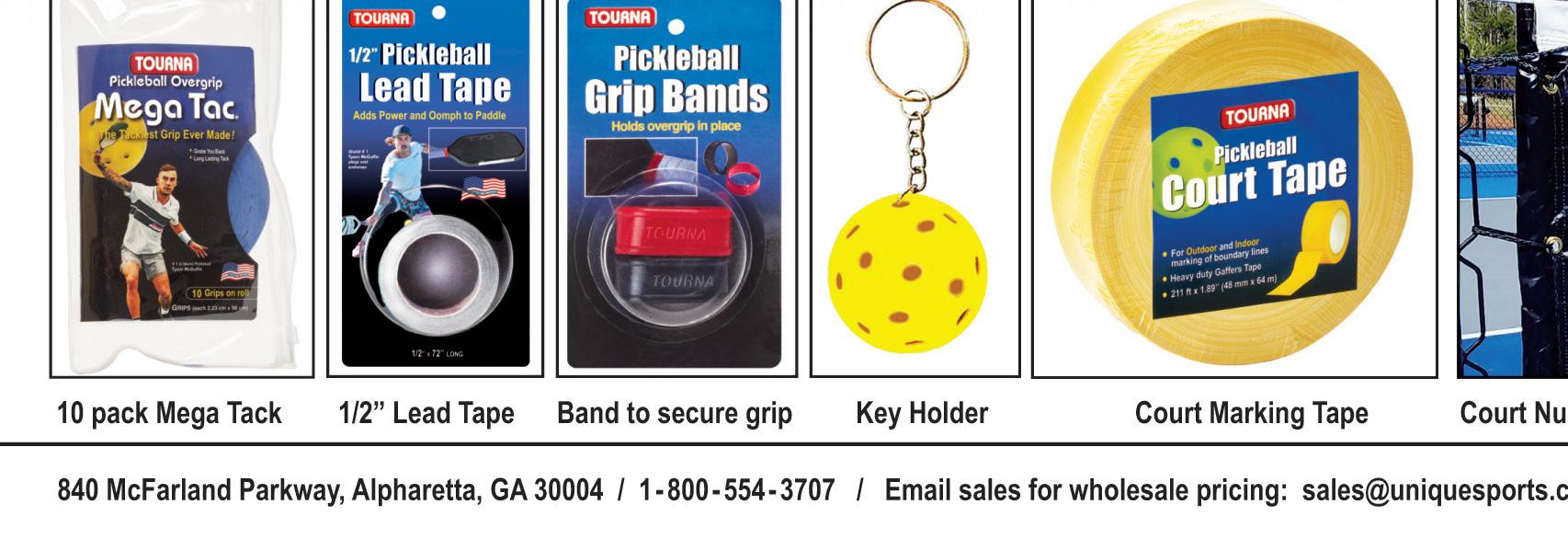



ARMOR® is the gold standard in tennis and pickleball crack repair. Its unique slip-sheet technology, wide 36-inch repair, and double-layered fabric ensure unmatched durability, lasting twice as long as other systems. Don’t settle for less. Get it right the first time with ARMOR®
Thousands of courts have ARMOR® installed
Used on over 5 million feet of cracks
Recommended by contractors worldwide
Engineers specify ARMOR® by name



Effective in sub-zero temperatures




Proven successful since 1993


















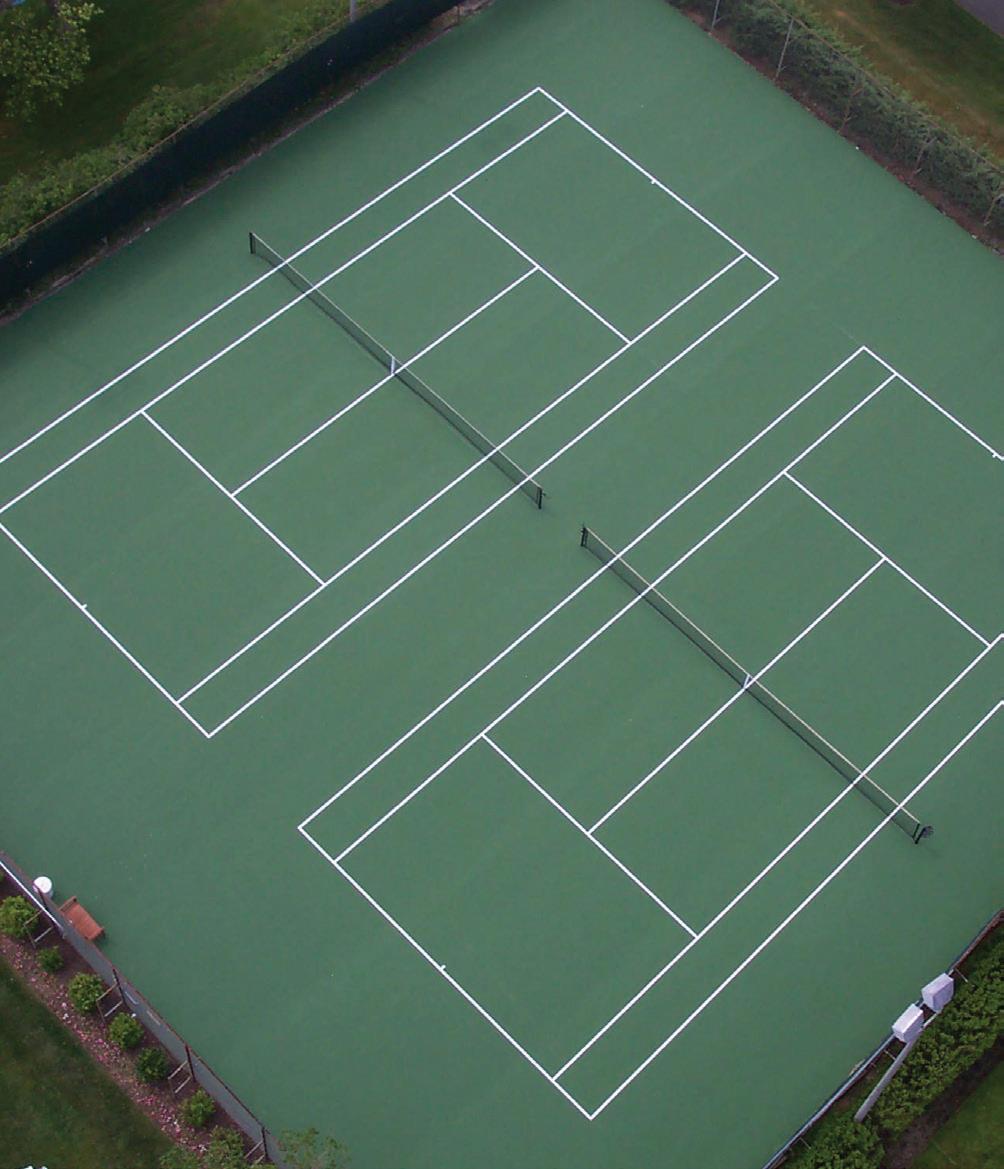








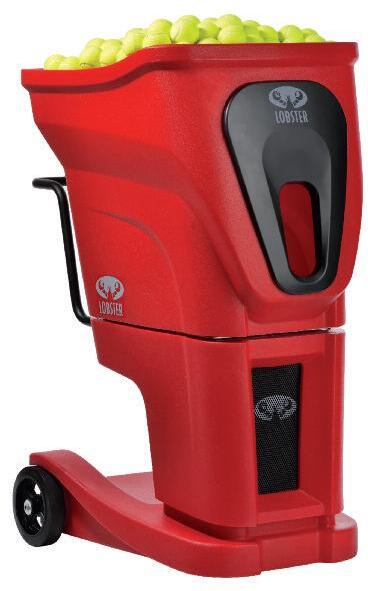
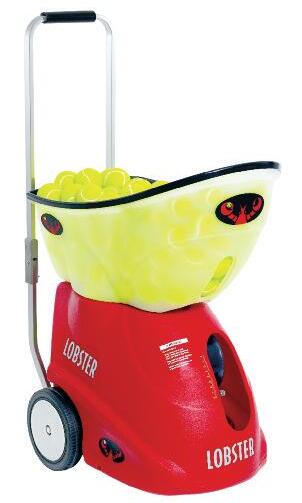



The Professional Tennis Registry and Professional Pickleball Registry have a new partnership with Bounce, a coaching and player development platform. All PTR and PPR members will receive complimentary access to Bounce Pro, with tools to help coaches grow their businesses, deliver worldclass experiences to players, and manage their lessons.
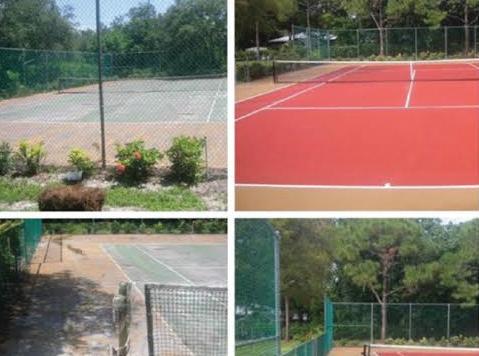



“Bounce is helping our coaches streamline their business, personalize the player experience, and elevate their impact,” says Pete Hurley, CEO of PTR and PPR. “Bounce now powers the next generation of PTR and PPR’s Find-A-Pro, making it easier than ever for players and club directors to connect with certified coaches nearby.”
With Bounce, PTR and PPR coaches can: manage lessons, payments, and scheduling in one place; track player progress and deliver personalized postlesson recaps; offer remote coaching through video analysis and skill breakdowns; showcase their expertise with their own personal coaching page; leverage their client base as a data-driven CRM for future lessons and clinics; and more.
Officials at Saddlebrook Resort in Wesley Chapel, Fla., which is the headquarters of the Professional Tennis Registry and Professional Pickleball Registry, say the property is undergoing a $92 million renovation that is “reimagining the 451room resort from the ground up.”
“This renovation represents … a commitment to restoring and elevating a legacy destination that has long been recognized as a premier setting for group travel, athletic training, and leisure,” says Camilo Miguel Jr., founder & CEO of Mast Capital, the real estate and investment firm that owns Saddlebrook Resort. “Our goal was to thoughtfully enhance the resort’s offerings, blending tradition with innovation to create a destination where golf, tennis and relaxation thrive.”
Among its amenities are 43 tennis courts, eight pickleball courts, a fitness center and spa. A multi-court padel area is planned, says the resort. Saddlebrook is also the longtime home of the Hopman Tennis Program.















The 2025 Biofreeze USA Pickleball National Championships will take place at the Barnes Tennis Center in San Diego, Nov. 15-23. Last year’s event, held in Mesa, Ariz., drew more than 2,600 athletes from 47 states and 13 countries, along with 10,000 spectators, generating an estimated $3.6 million in economic impact.
The U.S. Billie Jean King Cup team beat both Denmark and Slovakia in April to win Qualifying Group C. The U.S. team will join Italy, China, Kazakhstan, Ukraine, Spain, Great Britain and Japan in the eight-nation finals Sept. 16-21 in Shenzhen, China.
Tickets for the 2025 Davis Cup Final 8 in Bologna, Italy, are available at
www.tickets.italy.daviscup.com. The event will be Nov. 18-23.
The University of Texas El Paso is cutting its women’s tennis program due to budget constraints. UTEP, which does not have an on-campus tennis facility, says it will honor the scholarships for the seven students currently on the tennis team, and the coaching staff is also being retained through the end of their contracts.
Tennis Europe has signed a threeyear agreement with the Greek resort Kalimera Kriti, which is the Official Resort Partner. The resort is Greece’s largest tennis center: 20 clay courts (including a 500-seat center court), six artificial grass courts, and two

padel courts, overlooking the Cretan Sea. Tennis Europe also has teamed with Vodar to launch a partnership to provide young players and their coaches with mental coaching tools.
The National Team Pickleball League (NTPL) has rebranded as the Triple Team Pickleball League, emphasizing teamwork and inclusivity in men's, women's and combo formats. The league originated from the Utah Tennis Association in 2020. Visit www.tripleteam.org.
The 2025 Billie Jean King Cup by Gainbridge Junior Finals and Davis Cup Junior Finals will be in Santiago, Chile, Nov. 3-9. All matches will be played on outdoor clay courts.






Rafael Nadal received the Laureus Sporting Icon Award in April, honoring one of the greatest careers in the history of professional tennis.
Four-time Davis Cup champion Feliciano Lopez will return as tournament director for the next three editions of the Davis Cup Final 8. The Spaniard will lead the event in 20252027 while it is held in Italy.
American pro Ben Shelton has partnered with Thorne to highlight the company’s sports performance products, including its new Daily Electrolytes.


Bella Payne of Bradenton, Fla., and Nikolas Stoot of Miami, Fla., claimed the girls’ and boys’ 18s singles titles at the 57th annual Fila Easter Bowl. Payne will attend the University of Georgia, Stoot will attend Louisiana State
Five French players were sanctioned recently by the International Tennis Integrity Agency for breaches of the Tennis Anti-Corruption Program, linked to a case involving a match-fixing syndicate in Belgium. Those affected are Grigor Sargsyan, the leader of the syndicate, and players Yannick Thivant, Thomas Brechemier, Gabriel Petit, Thomas Setodji and Hugo Daubias.

USRSA Names New MRTs Master Racquet Technicians
* Ryan Chadderdon, Maple Grove, Minn.
* Brandon Eckstein, St. Louis, Mo.
* Joemichael Olfindo, Houston
* Evan Powel, Costa Mesa, Calif.
USTA Names Tracy Davies General Manager, USA Tennis
Tracy Davies has been named to the position of General Manager, USA Tennis, and will oversee an expanded high performance division that joins Player Development, Pro Circuit, Collegiate, Junior Competition and International Team Events into a single department.
As the strategic business lead for this division, she will be tasked with optimizing the resources and player pathways for the most competitive juniors and professional players in order to foster a culture of transparency, alignment and innovation, impacting players through competition, coaching and player support.
“Tracy brings not only deep experience in high performance and coaching, but also a strategic mindset and business acumen that will enhance how we approach the competitive pathway and help shape the future of American tennis at every level,” says USTA CEO and Executive Director Lew Sherr. Davies held numerous roles at the USTA, focused on player pathway development, most recently as managing director of Major Events and Competitive Pathway.
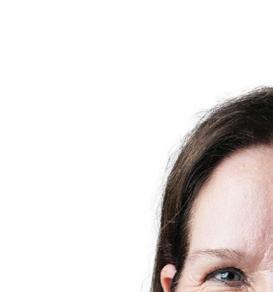















• Laykold is not re-purposed paint
• Advanced chemistry ensures greater court consistency
• Laykold’s sand blend delivers greater control of court pace and prolongs life of the court
• Higher quality latex means court pace lasts longer
• Laykold Gel is the world’s greenest court (60% recycled and renewable material
• Laykold’s automotive grade pigments retain color for longer
• Laykold’s is made in ISO certified factories in Germany, USA and Australia

• Laykold product yields are typically 10 to 20% greater than our competitors
In its 150th year in tennis, Babolat honors its past while looking ahead to a growing industry.
By Kent Oswald
Babolat celebrates its 150th anniversary with tennis this year. The relationship’s origin was a mere two years after the sport’s Big Bang—Major Walter Clopton Wingfield’s 1873 codification of the rules for “Sphairistikè,” the hourglass-court-shaped precursor to the modern game of tennis.
In 1875, British businessman George Bussey crossed the English Channel, inviting the creation of a more playable and e ective material for use in the racquets his company was manufacturing to take advantage of interest in this new sporting craze. Responding to that invitation was Lyon businessman Pierre Babolat, great-great-grandfather of current
company CEO Eric Babolat.
The result of that meeting was gut string, a natural fiber iconic in the sport to this day and developed because of the French company’s expertise with cow intestines honed through years of manufacturing strings for use in surgery, sausage casings and musical instruments.
PAST
While business requires looking ahead, this particular historic year occasions some looking back. The fifth-generation steward of the family legacy acknowledges the company’s unique history: “We are an insider acting like an outsider, bringing 150 years of tradition and expertise,


blending heritage with modernity,” says Eric Babolat.
The company’s heritage includes introducing not just the first tennis string, but, under Albert Babolat in 1925, the iconic VS Natural Gut. That string would aid Suzanne Lenglen and Rene Lacoste in victories at Roland Garros, and France’s Four Musketeers in claiming top honors in the International Lawn Tennis Challenge (today’s Davis Cup) from 1927 through 1932.
In 1955, Paul Babolat unveiled the first synthetic string, Elascord. In 1994, Pierre Babolat led the

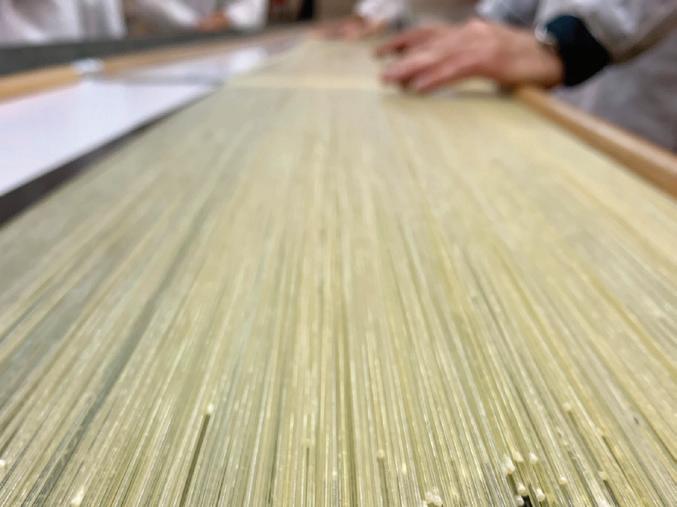
company into the racquet market with the Pure Drive, the frame Carlos Moya would use to claim the 1998 Roland Garros title—and the one Rafael Nadal began with before he switched in 2003 to the Pure Aero, introduced and designed to enhance topspin production.
Also in 2003, under Eric Babolat, the company debuted a high-performance tennis shoe. In 2013, the company introduced tech inside the racquet, allowing players and coaches to track ball serve speed, shots, impact locator, spin effect and other performance stats.
While innovation and new products seem to define the past, the present and future involves looking around to see who you can work with and partner with.
“At Babolat, we like to play in doubles with key partners that are experts in their respective areas,” explains Eric. “Since we started our journey in footwear in 2003, we have never stopped innovating with Michelin, the expert in ground contact, to create the best-performing outsoles for racquet sports.”
Commercial partnerships have been developed with, among others, Club Med and Wimbledon. To support the growth of tennis and to learn from the experiences of a wide range of players and levels, the company mines information from its longtime relationships with the Rafael Nadal Academy and Court 16, a New York City tennis club pioneering new ways of teaching the game in an urban setting.
Celebrating the history, Babolat kicked off its sesquicentennial with an April party for employees, friends of the brand, and iconic members of the players’ team at company headquarters in Lyon. Babolat is releasing celebratory products including tennis shoes, apparel, a bag, string, accessories and a book. At the majors for the rest of the year, Babolat will be inviting engagement with history at Roland Garros and serving as the official partner and equipment supplier at Wimbledon while hosting exclusive

We believe that racquet sports are the best answer for today’s and tomorrow’s world, for racquet sports enthusiasts looking for meaning, social bonds, well-being, mental and physical health.
VIP events, and a unique celebration is being lined up for the US Open.
While Babolat is most often associated with tennis, it also has a past, present and future with other racquet sports as well. It manufactures strings, shoes, apparel and accessories for badminton; shoes, apparel, accessories and paddles for pickleball; and shoes, apparel, accessories and paddles for padel—most recently in a collaboration with famed car manufacturer Lamborghini, which has expertise regarding the use of carbon fibers.
According to Eric Babolat, “We believe that racquet sports are the best answer for today’s and tomorrow’s
world, for racquet sports enthusiasts looking for meaning, social bonds, well-being, mental and physical health. This is the reason why our mission is to share our passion and our love of the game of racquet sports [tennis, padel, badminton, pickleball] on the courts, all over the world, to all … enthusiasts, from professional players to amateurs, from juniors to coaches.”
On this occasion, the mass of candles on the birthday cake creates a luminous glow celebrating heritage, modernity and a future we can’t wait to see. All in all, quite the history to celebrate.
Joyeux cent cinquantième anniversaire, Babolat.











and shorter courts, Red Ball Tennis is poised to bring in new players of all ages.
By Ellen Miller
This will be the year of Red Ball Tennis. After a year’s worth of pilots, the new USTA adult Red Ball program is rolling out at tennis facilities across the country. Right on its heels is yet another initiative: Red Ball Tennis youth leagues. Why so much Red Ball? Why now?
Tennis has always been challenging to learn—that’s nothing new. When pickleball swept into town, with its small paddle and slow, low-bouncing plastic ball, it began to take tennis players and courts. Why? Well, it's easy to learn and people can play the game right away.
Tennis has been tough to learn mostly because the implementation has been wrong. Too much old-school coaching still dominates. You’ve no doubt seen it: Coach stands players in a line and fires a barrage of yellow balls, which novice players can neither control nor rally.
New players to tennis enter the sport with limited tennis skills. To play, they need to track the incoming ball, move to it, figure out how to send it back, and get ready for the next ball. There’s a lot to do. In fact, up to 80 percent of the shot cycle fails on the receiving end. Yet too many coaches teach the game as if it were golf, the ultimate “sending” game, failing to teach the sport for what it is—a sending and receiving game.
If we are going to reach the USTA goal of 35 million players by 2035, we must do a better job at the entry level. We need to broaden the base of the pyramid. Yes, tennis participation has increased, just like pickleball, and retention in tennis has reached a five-
year high. But we need to gain and retain a lot more if we are to get to 35 million. This is why we need Red Ball Tennis for both adults and youth.
Some data points: The red felt ball is fat and slow. It hits wind resistance and travels slower. It has just 25 percent of the compression of a yellow ball, so it bounces low and sits nicely in the strike zone of a young child and gives all players more time.
The smaller court size and shorter racquets mean players can use a shorter stroke, so contacting the ball is easier. Players learn to rally quicker, and that means they have fun immediately. It’s true, adults tend to have better developed coordination and concentration, but the young ones can learn quicker with Red Ball and just by “doing.”
The new youth team league allows kids ages 7 to 14 to work together on teams; they start out hitting cooperatively and quickly improve their skills. No lines and no lectures mean the bulk of the time can be spent on rallying and point play. The league is the ideal format for after-school programs, summer camps and longer duration programs. Freed from ballspewing duties, the coach is able to assist players and roam the court, providing even more encouragement.
So, partner up your players, young and old, and let them send and receive “red.” Remember, rallies can be as simple as rolling a ball back and forth, tossing and catching, tossing and trapping, trapping and trapping. Players who can rally are playing the game! Have fun with it.
Congratulations! You’re creating tennis players—and thanks for contributing to 35 million by 2035!
Ellen Miller is a Coach Developer for the USTA and RSPA. She also works for the Houston Tennis Association as a Youth Pathway and Coach Development specialist. She is RSPA Elite certified, High Performance certified and has worked on numerous USTA youth training initiatives. She currently is Chair of the National USTA Red Ball Task Force.




U.S.-based racquet sports sales manager. An improvement due out this summer will provide advanced AI coaching insights from collected videos.
Where PlaySight provides cameras to facilities as a package, Sport AI is agnostic: It can analyze videos captured on mobile phones, from oncourt mounted cameras and through direct broadcast feeds. Another plus, Pedersen says, is the ability to provide textual feedback, enabling users to compare their movement to a specific professional player as a benchmark. Whether focusing on the physical or mental side of sports, these companies o er athletes real-time pointers from specialized AI-generated analysis built on proven concepts. The training method advanced by Gallwey, for example, is arguably the most influential performance psychology method to come along in
the past 50 years. His teachings have helped the world’s best performers in sports, business and the arts—from Polish tennis star Iga Swiatek to Microsoft’s Bill Gates to violinist Itzhak Perlman.
“All these sports psychologists that you see out there today, the bedrock of their teaching is all from The Inner Game of Tennis,” Sweeney says.
Sweeney, also a former Division I tennis player, demonstrated a version of the Inner Game app for RSI. He asked a hypothetical question about a tendency to double-fault late in a match. Inner Game AI returned the answer in seconds: “It’s common to feel pressure at the end of a match, especially when winning is in sight,” the bot told him. “This tension comes from what Timothy Gallwey calls Self 1, the critically controlling voice. … Try focusing on Self 2, which is your natural ability and instincts.
PLAYMATE_Ball_Machines_Half_Page_Ad_700_by_475_12_2024.pdf 1 12/17/2024 8:02:09 AM







Relax, trust your body, and focus on the process rather than the outcome. This can help you stay calm and reduce double faults.”
Like having a mental coach at your side, the app dives into the psychological aspects of the game.
“We believe that this is going to be the performance coach in your pocket,” Sweeney says, “that is nonjudgmental, accessible anytime, anywhere, and based on the trusted source that founded modern performance psychology.”
As Sport AI continues to pitch its product to sports federations, academies and athletic brands worldwide, Pedersen sees a time when AI will be used across all sports “when it comes to training and analysis.”
Sweeney agrees, noting that with AI, gaining the mental edge on the court or on the field “is not as far away as you think it might be.”









A new eight-court complex has transformed the tennis program at this Kansas high school.
By Cindy Cantrell ADVERTORIAL
St. James Academy Catholic High School in Lenexa, Kan., proudly showcased its eight new tennis courts at an open house in November 2024. Yet the celebration really got into full swing this spring, when the girls’ and boys’ tennis teams took to the courts.
Anna Bomhoff, head girls’ tennis coach and assistant boys’ coach at St. James Academy, expressed her excitement and gratitude on social media: “To say the new tennis courts have been amazing would be an understatement. They have completely transformed our program, allowing us to finally bring to life the vision we have had for so long,” she wrote on Facebook and Instagram in March. “For the first time,
our entire team can practice together, fostering a stronger sense of unity while allowing our players to push each other to get better every day.”
The $950,000 tennis court project, part of the school’s three-year, $15 million Mission Forward capital campaign to build a sports complex and cultural arts center, was assisted by a $40,000 grant from USTA National’s Tennis Venue Services (TVS) and an additional $7,500 from USTA Missouri Valley.
Within the USTA Missouri Valley section, St. James Academy was the largest among six projects totaling more than $1.2 million that reached completion in 2024. Jared Herzet, athletics and activities director at St. James Academy, says the project has been invaluable for
For the first time, our entire team can practice together, fostering a stronger sense of unity.
the larger community as well as student-athletes.
“It is such a blessing for our tennis athletes to be able to walk out the back door and practice on our campus among all the other sports on campus,” says Herzet, noting the challenge of finding courts for practice and game play with only two sets of tennis courts previously in the city of Lenexa. “We’re very grateful for the USTA’s support, which has greatly boosted our tennis program while filling other gaps.”
In addition to St. James Academy’s tennis teams and physical education program, uses for the new courts may include youth camps, USTA Junior Team Tennis, middle school programs, adult leagues, and collaborations with area schools.
According to Heather Blythe, a Contract Project Manager for TVS who worked with St. James Academy, the grant application process was recently streamlined to make it easier to apply for assistance with grassroots

projects and to receive funding. In addition, TVS works with experts in court and facility design and construction, along with key facility and parks professionals.
The TVS department, which is celebrating its 20th anniversary this year, is instrumental in the USTA’s multi-pronged strategic plan to grow tennis participation to 35 million Americans by 2035, while ensuring adequate courts and facilities for players of all abilities.
TVS grants, which vary in amount according to the size and scope of each project, apply to categories of basic facility improvements, resurfacing and rehabbing of existing facilities, and new construction and reconstruction. Last year, TVS granted $1.2 million in assistance; this year the grants budget has soared to $10 million to help improve tennis infrastructure around the country.
“With our expanded 2025 budget, we’re not only able to support more tennis facilities than ever before, but we’re also increasing the maximum grant amounts available,” Blythe says. “There’s never been a better time to apply and bring lasting impact to your community through tennis.”
Sponsored content. For more on how the USTA’s Tennis Venue Services can help your facility or project, visit usta.com/facilities or email facilities@usta.com.

Throughout the country, National Junior Tennis & Learning chapters are delivering education, tennis and life skills.

> As USTA Middle States continues celebrating its 100-year anniversary, National Junior Tennis and Learning of Trenton (NJTLT) is looking forward to its own. In 2025, the historic NJTL chapter will celebrate its 50th year.
Currently, the program serves more than 1,000 students around the Trenton, N.J., region, focusing on introducing tennis and educational opportunities to the community through programming at Cadwalader Park, Villa Park and its close connection with public schools.
Students who become interested in the sport at school—along with any-
one in the area interested in playing tennis—can take part in after-school programs like Academic Creative Engagement (ACE) and Minecraft Education. NJTLT also offers community tennis programs in the spring, summer camps and, for those who take a more serious interest in tennis, the Ashe Elite Program.
NJTLT is on the cutting edge of finding new ways to engage and educate students about life and tennis. Says NJTLT Executive Director Chris Liverman, “What keeps me coming back is being a part of the youth’s journey. I’m here for the students as a mentor and a caring

NJTLT is on the cutting edge of finding new ways to engage and educate students about life & tennis.
adult, providing guidance and support, whether it’s a student’s first tennis lesson, first match or after a hard loss.”
Liverman credits the hard work and dedication of the coaches and staff at NJTLT for keeping students connected and engaged in tennis, and says he’s especially grateful for two veteran coaches working with the program: JoSeph Revell and Andy Stoll. He also mentions the program’s mission: To strengthen character and enhance the lives of youth by providing opportunities and instruction in nutrition, education and tennis.
The number of young lives that NJTL of Trenton impacts continues to grow. Whether it’s through providing thousands of dollars in college scholarships, enrichment programming with partnerships like The Lawrenceville School, Ryder University and Bloomberg LLP, or creating an inclusive, safe community, NJTL of Trenton is making a difference on and off the court. —Katie Miness
> West Michigan Community Tennis has grown exponentially since May 2023. In two years, the chapter went from helping a handful of kids to offering free tennis programming to hundreds of children.
Western Michigan Community Tennis has after-school programs at six public schools, and during the spring, piloted tennis in PE classes, impacting 700 kids. The NJTL invited students to its “Tennis in the Park” programming—which runs for six weeks in June and July and is free to attend— and attracted more than 550 participants. WMCT also offers one hour of tennis along with 30 minutes of “Be Nice” mental awareness training.
In the fall, the group will return to six public schools (grades K-8). Over the past year, WMCT has awarded 25 scholarships to middle and high school students for free lessons at Premier Athletic & Tennis Club. It also offers free weekly youth wheelchair tennis programming year-round.
“Jack Ponstine, the leader of West Michigan Community Tennis, and his wife, Kris, have been essential to the organization’s growth,” says Zoy Brown, the NJTL staff liaison for USTA Midwest. “Their leadership and dedication to tennis, along with their focus on mental health, have enabled the chapter to positively impact thousands of kids.” —Molly Kinnick





> Tennis Success goes above and beyond to serve the youth of Corpus Christi. It provides free tennis instruction, equipment and academic support to more than 600 underserved youth. And beyond that, it breaks down barriers to participation by covering tournament fees and travel expenses, ensuring kids can compete both locally and out of town.
The NJTL brings programs directly to schools in attendance-risk areas, combining tennis with academic and cultural enrichment. It also partners with organizations like the Boys and Girls Club and the Coastal Bend Food Bank—and the NJTL’s commitment to inclusiv-
ity also shines through adaptive tennis programs offered in partnership with The Miracle League, ensuring children with disabilities have access to the sport.
Recently, Tennis Success won the USTA Texas 2025 NJTL Impact Award, recognizing and honoring its impact on its community through tennis.
“Winning the NJTL Impact Award is a tremendous honor, reaffirming the life-changing work we do through tennis and education,” says Tennis Success Executive Director Cher-ri Peña. “It highlights the dedication of our coaches, staff, volunteers and community partners who work tirelessly to enrich the lives of
at-risk youth. This award recognizes the impact we’ve made in helping hundreds of students see Tennis Success as their second home, empowering them with the skills, values and opportunities to pursue higher education and become future leaders.”
“Tennis Success is a shining example of what happens when passion meets purpose,” adds Katy Rogers, USTA Texas’ director of CTAs & Facilities. “They are changing lives in Corpus Christi and beyond, both on and off the court.”











> A Bright Future is a USTA New England NJTL chapter that recruits minority boys in the Boston area and supports them on their tennis journeys. Run by childhood friends Chad Bright-Reason and Troy Crichlow, the organization provides financial assistance, mentorship and a cultural identity mixed with financial literacy education.
“Chad and I grew up at a place where the owners, directors of tennis and a lot of the coaches looked like us, and people of all races and creeds played,” Crichlow says. “We

always felt comfortable when we traveled around playing tournaments, and that’s a big gap that these kids are experiencing, and we’re trying to recreate that and more.”
The organization aims to create a brotherhood and a sense of belonging among high-performance players
while also integrating them into the greater tennis community. They focus on player development plans and scheduling, educational classes, as well as frequent trips and bonding activities.
“In our community, tennis is … not necessarily the cool thing to do. Even the kids that were already playing tennis, they didn’t feel like it was a part of their lives, but just something they did sometimes after school,” BrightReason says. “The progression I’ve seen and the bonds they’ve developed are beautiful, and they’re starting to realize they do fit in and that tennis is something that can benefit them all through life.” —James Maimonis


























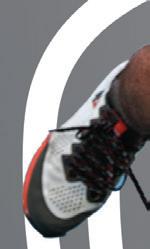



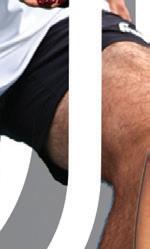




























• 950+ members joined RPO in the first eight (8) months
• Fastest growing pickleball coaching organization in the world
• 20 countries have members in Racketpro
• 39 U.S. States have members in RPO Australia / Brazil / Brunei / Canada / China / Germany / Guam / HongKong / Ireland / Japan / Malaysia / PuertomRico / SouthKorea / Sweden / SouthAfrica / Switzerland / Taiwan / Tanzania / Vietnam / USA
• 100th RPO workshop conducted in May
• 79 in USA - 23 states
• 21 International - 11 countries

• 35 clinicians - 27 in USA - 8 International
• Collin Johns, named RPO Director of Education
• Iñaki Balzola named International Director of Racketpro
• New Pro IV JOOLA paddles are now available – one FREE with your RPO membership




“ I learned more than I have in the last 5 years!






I learned more in 5 hours of RPO’s Level 1 workshop than I have in the last 5 years! I scheduled an RPO Level 1 and 2 at my club - should be required for all coaches!
Jack Busby Director of Racquets, Fig Garden Swim and RC / Fresno, CA
“ I can’t wait to take the RPO level 2 program!
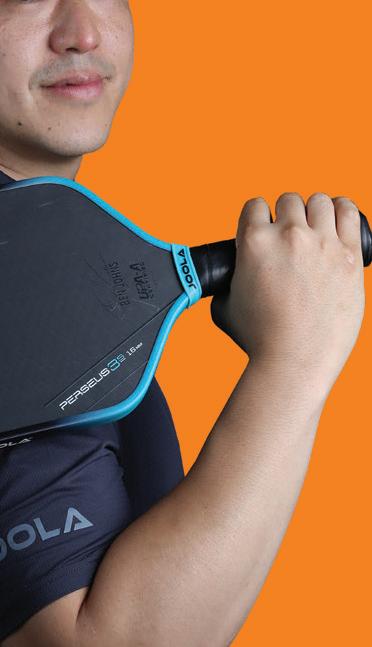

Taking the RPO program was definitely the best decision I made as a coach and a player. The coaching philosophy that Collin Johns developed for RPO has changed the way I coach and even how I look at every rally. I can’t wait to take the level 2 program and 100% recommend this to all pickleball players!
Pokan
Yang RPO Member / China



*Partial schedule




Hailing from Atlanta, Lamar Scott received PPR’s Coach Developer of the Year 2024 award. He conducted 30 PPR certification and training workshops in 2024 and is on his way to surpassing that in 2025. Through those workshops, Scott trained more than 350 new pickleball coaches in all corners of the country to help spread the game.
It seems that nothing can hold Scott back from his mission—he steadfastly holds workshops in early morning and late at night, no matter the conditions.
“Lamar maintains the highest respect for the PPR and for the sport,” says Sarah Ansboury, PPR Managing

Director. “He treats each workshop as an opportunity to grow the PPR and to help send out another wave of coaches who can help their communities embrace a fun and healthy sport.”
Scott’s students also offer high praise.
“Lamar Scott was the clinician for my PPR workshop in the Sandy Springs location,” one student remarked. “He did an excellent job teaching technical/
tactical skills through demonstrations, drills and coaching exercises. Since completing the one-day workshop, I feel confident that I will be a great pickleball coach for all.”
In addition to his work with the PPR, Scott has been a PTR Level 2 Tennis Professional for the past 25 years, and has served as president of the Atlanta Lawn Tennis Association.


WHEELCHAIR PICKLEBALL CHAMPION OF THE YEAR
Born and raised in Honolulu, Shelby Baron is PTR and RSPA Level 2 certified for tennis and has been coaching junior and wheelchair tennis players since 2013. She was named the PTR Wheelchair Professional of the Year in 2019 and inducted into the USTA Hawaii Pacific Hall of Fame in 2023. Most recently, she obtained her Level 1 certification as a pickleball coach through PPR, and is currently manager of the USTA’s Racquet Sports Management Apprenticeship (RSMA) program, which focuses on developing coaches into leaders within the racquet sports industry.
“Given that I am responsible for teaching classes to our apprentices, it
was essential to receive pickleballspecific education to further my footprint as a coach developer,” Baron says. “Gaining exposure and experience in complementary racquet sports is critical to becoming a future leader as roles have evolved into directors of racquet sports.”
Baron notes that pickleball is an affordable and easy-to-learn sport that is beneficial to people with physical disabilities.
“The pickleball court is smaller, which allows chair users faster court coverage. Just like tennis, it provides an environment for social interaction and physical activity. As pickleball continues to gain popularity in the U.S., I hope to also see similar growth in wheelchair participation. Most importantly, knowing how to coach pickleball puts me in a position to grow the racquets industry.”
PICKLEBALL MANUFACTURER OF THE YEAR
Last year was huge for Skechers, which announced 2024 record annual sales of $8.97 billion. In the pickleball category, the company was the Official Footwear Sponsor of the 2024 Minto US Open Pickleball Championships in Naples, Fla., and pickleball athletes Catherine Parenteau and Tyson McGuffin continued to compete in Skechers footwear and performance apparel.
To complement its pickleballspecific footwear offerings, the brand launched a line of performance pickleball apparel for men and women. On the retail side, Skechers opened its first performance-focused store in the West Edmonton Mall in Canada. The 7,500foot space boasts digital LED screens and half-court platforms for pickleball, where customers can try out products. The company currently operates 5,300 stores worldwide.
“Skechers pickleball footwear is a key focus for the brand and will remain a priority as we continue to evolve and grow within the sport. The brand will also continue to expand on its collection of performance pickleball apparel for men and women,” says Arlene Guerrero, Skechers’ public relations manager for Performance.
“Pickleball is an inclusive sport with a multi-generational appeal,” she adds,



and knowledge beyond just installing strings in the racquet correctly. Here are some of the key differences and enhanced skills required to handle the rigors of stringing at tournaments.



When it comes to stringing at tournaments, you need to be at the top of your game.







By Bob Patterson USRSA Executive Director


> Tournament stringing is a topic that frequently pops up in my inbox, and it’s one topic that I am always comfortable addressing, since I spent 30 years working on stringing teams. I even owned a company that provided stringing services to top ATP and WTA events, as well as ITF and USTA events from regional tourneys to national junior events to Pro Challengers.




It’s been a while since we addressed the topic of tournament stringing, and even though I’ve been out of that game for nearly a decade now, many things are the same. But there are things that have changed since my time in the stringing room, so I reached out to those still working in that arena to provide their input.







of course need to be a knowledgeable and skilled racquet technician. Having experience, good references and certification provides good evidence that you’ve exhibited that in an independent setting. However, tournament stringing requires skills


In this article, we’ll address the skills and knowledge required to be a good tournament stringer. In a second, upcoming installment, we’ll address the process of becoming a tournament stringer.








First and foremost, you need to have an excellent skillset and knowledge of your craft—and those attributes need to exceed the requirements used in your normal day job stringing at the club or store. You certainly need to always do a great job stringing in the shop, with strings installed correctly and at the right tension. But at a tournament, it is not unusual to have very specific requests from a player.



For instance, at a tournament, a player may request four knots, on a frame that you normally would string as one piece in your shop. Or players may require abnormally high or low tension, outside the recommended tension range. They may even require specific knot locations, such as, “Don’t tie-off on any mains.”

Most players like to have their racquets strung by the same technician on the same machine throughout the event, and most teams try to accommodate that.



You also may encounter tournament stringing teams that have specific requirements in order to have more uniformity on the team, such as a specific amount of increased tension on all tie-offs, or even a specific knot that is used by all team members. These may seem like little things, but they can add to the stress load when they are not what you are used to doing.



To be a tournament stringer, you


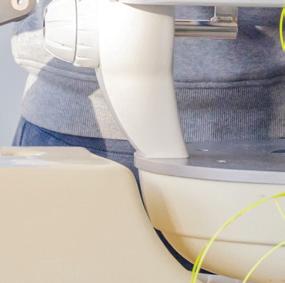





Critical thinking comes into play often. If the stringing ticket requests “2 Knots” and the mains end at the throat, what pattern will you use to accomplish this? It will need to be one that can accomplish the job to the player’s satisfaction and provide an excellent and consistent outcome.
While consistency must be a staple of your service no matter the job, it is front and center at the tournament level because you are likely to get multiple racquets from a player each day and the expectation is that each one must be exactly the same. Professional players, especially, will notice even the slightest difference in frames.
Managing your time is essential when working in a shop or store, but the pace and volume at a tournament is very different, so time management is a critical element that can be the difference between success and failure.
At the beginning of an event, the volume of frames to service can be brutal and seem overwhelming, depending on the size of the tournament draw and the number of stringing team members. You are expected to keep pace and pull your share of the workload. While the team manager will likely divide up that workload as evenly as possible, it is still up to you to do your part.
Your skillset may easily enable you to turn out three or four finished racquets per hour, but can you do that for 16 or 18 hours straight and still squeeze in meals and bathroom breaks? Of course, as players lose and leave the tournament, the pace will slow a bit.
Despite the best team management and planning, unexpected things will happen at a tournament, and that’s where having the “team” behind you will help. Team members can get sick, so you and others need to fill the gap. Or a teammate’s machine breaks down and is out of commission for four hours, so everyone else has to divide up the load.
There are any number of things that can happen. The team manager will make most of the decisions on how each will be addressed, but it is up to you to be a good teammate and do whatever is required to get the job done in the most professional manner possible.



With tennis as a foundation and pickleball as a revolutionary, padel may be the sport that can bring it all together.
By Tim Bainton

Tennis is the legacy. Pickleball is the disruptor. But padel? Padel is the glue.
Padel is the force binding together tradition, innovation and community in a way our industry has never quite seen before.
As someone who has spent decades in racquet sports—first as a coach, then as a facility operator, and now as an investor and builder of clubs—I’ve watched the landscape evolve, fracture and, now, start to realign. This isn’t a zero-sum game. The growth of one racquet sport doesn’t have to come at the expense of another. But to fully understand where we’re going, we have to understand the unique role each sport has played.
athleticism and global reach.
But over time, it also became rigid. In many markets, tennis has struggled to attract and retain new participants, especially younger or more casual players. Its roots are strong, but its branches have stopped growing.
Enter pickleball—the disruptor. Accessible, social and immediately gratifying, pickleball has exploded because it removed barriers. You don’t need private lessons, a country club membership or perfect technique to enjoy it. It flipped the script, replacing elitism with community and tradition with speed. But it’s also hitting growing pains. As it saturates the market, there’s a pressing question: How deep does its staying power go?
And now comes padel—the glue.
welcomes pickleball players looking for a slightly more structured, athletic challenge. And most importantly, it builds community by design. You can’t play padel alone. The doubles-only format, the glass walls, the compact courts—all foster interaction, energy and watchability.
I’ve never seen a sport catch fire the way padel is right now—and I don’t say that lightly. I’m involved in club launches across the country because I believe this is more than a trend. It’s a cultural shift in how people consume sport, how clubs think about programming, and how we design for connection.
But let’s be clear: This isn’t about choosing sides. This is about ecosystem thinking.
What if we stopped asking, which sport is “winning,” and started asking how all three can win together?
What if we designed racquet clubs that welcome all skill levels—from elite junior tennis players to firsttime pickleballers to corporate padel leagues?
What if we trained coaches not just to teach technique, but to foster community, loyalty and joy?
What if clubs weren’t just facilities … but movements?
The future of racquet sports will not be defined by the loudest sport in the room. It will be defined by integration—by clubs and operators that understand how to evolve, not react. By leaders willing to invest in infrastructure that embraces diversity of play. And by coaches, visionaries and investors who understand that growth is not a battle—it’s a collaboration.
So to the racquet sports industry: This is your moment. Are you evolving with the game … or watching it pass you by?
Let’s connect. Let’s collaborate. Let’s build the future—together.
Tennis laid the foundation. It gave us the culture, the court structure, the coaching ladder and a blueprint for excellence. For over a century, tennis has set the standard—for competition,
Padel doesn’t try to replace tennis or pickleball. It connects them. It brings tennis players back to the court in a new, less physically taxing way. It RACQUET
Tim Bainton is the COO of Epic Padel, President of Blue Chip Sports Management and a Visiting Professor at the College of BILT at Marymount University.
We welcome your comments. Email peter@acepublishinggroup.com.



Ilove the following quote: “The greatest illusion of leadership is to think that one can be led out of the desert by someone who has never been there.” It emphasizes the importance of experience and learning tough lessons from people who have walked the walk, particularly when facing challenges. I think this accurately illustrates our association and the network we have from it.
“The greatest illusion of leadership is to think that one can be led out of the desert by someone who has never been there.”
Networking is a critical skill and benefit of our association because it opens doors that skills alone sometimes can’t. I don’t, however, think we are taking it as seriously as we should. Here are a few reasons why you should commit regularly scheduled time each week to network:
1. Opportunities
• Career growth: Whether it is today, next month or next year, networking can lead to new jobs, more exposure, collaborations, invitations or speaking events.
Brian Dillman | RSPA CEO

• Business expansion: If you’re launching something like a new on-court program, reservation software or racquet sports facility, the right network connects you with investors, advisors and early adopters.
2. Learning & Insights
• You gain industry knowledge that isn’t in books or Instagram—like emerging trends, best practices or even what not to do. We say be curious, but to succeed in the racquets industry, we must be experts at what we do.

• Mentorship and advice from seasoned pros can help you avoid common pitfalls and have someone in your corner to bounce ideas off or troubleshoot with someone who has been where you are.
3. Reputation Building
• People trust people they know (or who are recommended by people they trust). Networking helps you build credibility and your personal brand.
• When you show up consistently, help others, share value and show you care, people start to associate you with excellence and leadership.

• Especially in high demanding, customer centric fields like racquet sports, hospitality and service businesses, having a network gives you access to emotional support, collaborators and cheerleaders.

• “Out of sight, out of mind.” Networking ensures people know about your work, your ambitions and what you stand for.
• Creating and expanding your network and being consistent with your values will help build your long-term reputation, and set you up perfectly for great success.
One of my favorite principles is from the Japanese concept of Kaizen: “Strive for one percent improvement every day. You can always improve yourself. Whether it is learning something new or perfecting a skill you already have, there is room for improvement in everyone’s life.” Attending a World Conference is is an example of continuous daily improvements. It is a time to re-connect and expand your network and an opportunity to re-ignite your passion for our industry by learning from world-class experts in the Racquet Sports field. On court, off court, leadership skills, career enhancement, inspiration and celebrations – this is what the 2025 World Racquets Conference will bundle together for you this year.
Our industry continues to grow and thrive, but we can’t put our heads in the sand and ignore the challenges: land and people. Tennis courts are still not filled because we need more passionate people
who care about using racquet sports to build thriving racquet sports programs, which can change lives in the public sector. Pickleball courts and stand-alone facilities are under pressure to figure out a profitable business model that will support a positive ROI for the investors. Padel is poised to thrive, but many developers are under pressure to get permits approved, courts installed and the right people to kick off the programming aspect. Platform had a great season, but we need to continue to develop more coaches who understand platform programming to continue to grow successful businesses. Squash is also limited in the number of coaches who are skilled to run successful youth, high school and college programs.
through amazing experiences and inviting, passionate programming. Today, the landscape is exactly the same. People make all the difference, and the Racquet Sports Professionals Association is inviting you to step up, be noticed, share your experience with those who can learn from your “walk through the desert.”
We look forward to seeing you in Hawaii for one of the most special World Racquet Conferences ever offered to our membership. Your body, mind and spirit will be better for it and so will our industry!


Over the history of our association, now 98 years old, we have always advocated for the people who work in our industry as a career, who grow our sports

Brian Dillman RSPA CEO

Each month, the RSPA uses this column to select someone who helps our association run to give better insight into what the many faces of our association do to grow racquet sports. This month we are featuring Greg ‘Moose’ DeMoustes.
Greg ‘Moose’ DeMoustes is a dedicated leader in racquet sports, recognized for his commitment to diversity and inclusion. With 17 years of certification through organizations like the RSPA, PTR, PPR and PADEL MBA, he has influenced the sport while fostering an inclusive environment.

As Regional President of RSPA Florida and a key member of the RSPA National LGBTQ+ DE&I Task Force, DeMoustes has been instrumental in promoting inclusivity since 2020. He also serves as a liaison for the RSPA National Adaptive Committee, collaborating with organizations like Love Serving Autism to expand opportunities for athletes with disabilities.
Beyond his official roles, he founded We Play For Pink and We Play For Pride charity tennis tournaments, supporting breast cancer awareness and LGBTQ initiatives. His passion for inclusivity extends far beyond the court.
Moose was a featured speaker at the 2024 World Racquets Conference, where he presented Diversity of Thought, emphasizing the importance of welcoming all players.
“Creating safe, inclusive spaces is at the forefront of my mission,” he says. “It’s about love and respect.” His advocacy has earned him accolades such as the RSPA FL Bob Ryland Diversity Award (Fla.), PTR Florida Pro of the Year, and USTA FL Volunteer of the Month. As a USTA FL Community Coach and Leadership Academy graduate, he continues mentoring the next generation of athletes and coaches.
As a board member of Women Coaching Racquet Sports, DeMoustes is committed to empowering women, LGBTQ+ individuals and underrepresented groups. His vision for racquet sports prioritizes inclusivity, respect and community-building, ensuring a welcoming future for all players.
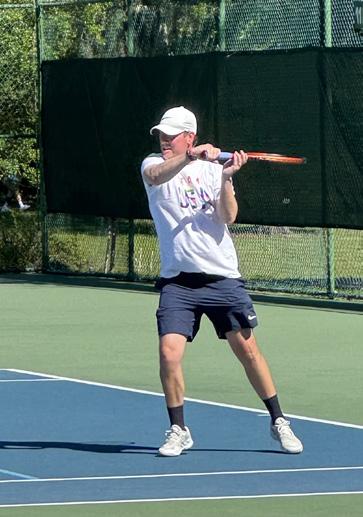









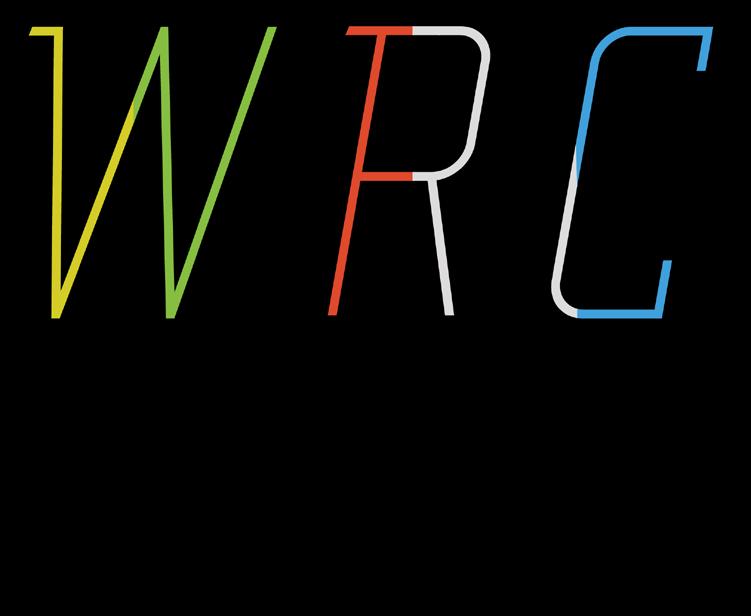
Last year, the RSPA debuted a bold new brand that reflects the dynamic transformation of racquet sports and centers you, the member, in everything we do. That spirit carries into this year’s World Racquets Conference with a powerful message: it’s all about your growth, goals and future. Each year, we have collected feedback after our conference concludes to tailor the following year’s experience around our members’ needs. This year, in bringing the conference to Hawaii, we are using that feedback to drive an intimate conference that puts you, the member, at the center of the learning and professional development experience.
Collin Brazan | RSPA Director of Marketing

We’re thrilled to welcome you to Kona, Hawaii, for our annual World Racquets Conference this September. Set against the stunning backdrop of Kona, this year’s event promises unparalleled networking and professional development. Registration is now open, and with limited availability, we encourage you to secure your spot soon. Hotel rooms are expected to sell out quickly.


We invite you to fly in on Saturday, Sept. 20 and take advantage of our exclusive hotel rate—$229 or $269 per night, depending on room type—available to registered attendees only. This gives you the perfect opportunity to unwind and explore both the resort and the natural beauty of the island before the conference officially kicks off.
The action begins Sunday evening with the Industry Village, a fresh and elevated take on our traditional trade show experience. This high-energy kickoff event includes:
• Direct access to industry experts and leading voices
• Showcases from iconic racquet sport brands
• Complimentary food, beverages and a drink ticket for all conference attendees (with a cash bar also available)
From there, you will experience our renowned, world-class education on- and off-court, reimagined social and networking events driven by member feedback, and time to relax or explore our once-in-a-lifetime destination.

Scan the QR code to register for the newly named World Racquets Conference 2025!
From the continued evolution of tennis to the explosive growth of pickleball and padel to emerging technologies and modernized club models, the racquet sports industry is evolving fast, and that means exciting new opportunities for professionals. Whether you’re a coach, club operator, entrepreneur or aspiring industry leader, WRC25 is designed around you. And it isn’t just about getting you up to speed in an evolving industry—it’s about helping you lead it.
Join us in Kona and be part of what’s next.






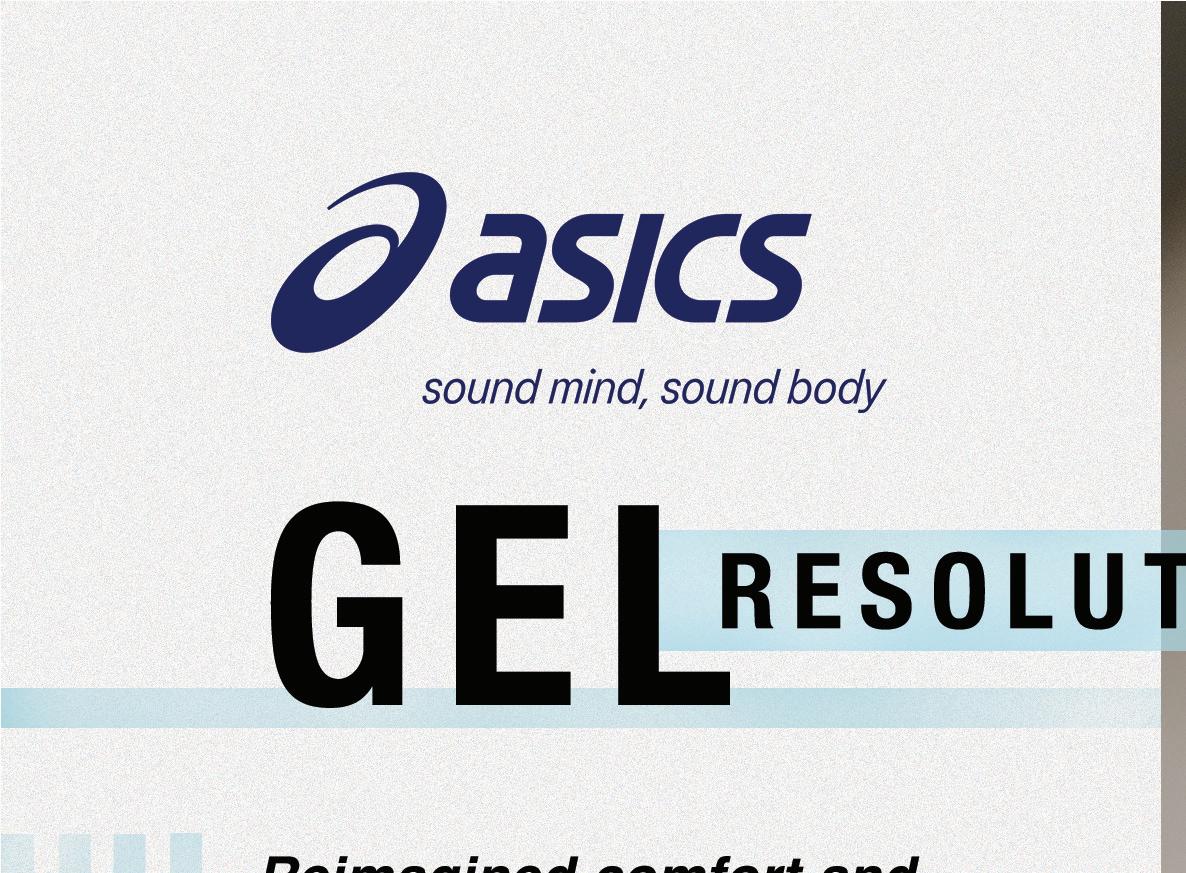









One of the most significant themes in the book is conducting business with a personal touch. If leaders in the tennis industry or anywhere else are speaking robotically or acting as if their work is a chore, clients will inevitably be turned off. Niebur is well aware of that potential pitfall.
“One of the most significant themes in the book is conducting business with a personal touch”
As he recounts, “I remember when I was on the court early on before Stan and I started the company. I knew it was all about building relationships with these people and their families and them knowing that I cared about them as a person, understood who they were, and what they were about. That is what ‘engaged’ is all about. If people are just selling tennis lessons or selling memberships and not really getting to know their [students] well, then it feels transactional. We want these people to come to Wimbledon or the U.S. Open and feel like they can open up so we get to know them and find out what is important to them.”
Crucial for readers of “Winning Trust” is recognizing the value of SERVE without downgrading the three closing chapters which are classified as “Second
Serves.” As Smith conveys in the book, “Your first serve doesn’t always go in. When it doesn’t, you have to let it go— move on. Take the second serve. If you lose the match, move on again. Take the next opportunity to accelerate your game, to accelerate trust. Do the next good thing.”
That philosophical message transcends tennis and is a metaphor for life. In many ways, that is the essence of the book— to simultaneously examine the macro alongside the micro, to put everything in perspective and ultimately make sense of it all.

In the final analysis, the book is, more than anything else, about trust in every sphere. There could be no better messenger for unwavering straightforwardness than Stan Smith, and Niebur has built his reputation around uprightness. That is why their book has credibility.
As Niebur asserts, “Stan has a very good name and he has always been a man of his word. You really see it at these events we have. Whoever he engages with is kind of blown away by how much he invests time wise, how well he listens and what a deep thinker he is.”


As Smith wraps things up in terms of his aspirations for “Winning Trust,” he says, “I hope it will give many people ideas about what they can do to improve in relationships that are personal and professional. Maybe racket sports leaders will read the book and it will help make them become better people, better leaders and better teachers.”
Niebur adds, “My hope is people apply this book to their life at work and at home and at the end of the day understand the acronym SERVE and realize that the secret sauce behind what we have done is very applicable to their lives.”
After taking the tennis court lighting industry by storm in Europe with over 1,500 installations in 23 different countries, Tweener lighting systems has now begun to make a name for itself in the United States. First publicly launched in the states in December of 2021, the new innovative lighting solution has been installed on over 350 tennis and pickleball courts at more than 150 different facilities in 23 states. For many country clubs, HOAs, and residential courts around the country, this system has become the best and sometimes only solution to light their courts for several reasons.
The system is made up of sixteen 12’ 6” fixtures that run 100 feet in length down each side of the court or bank of multiple courts to light the playing area. These fixtures are mounted directly to the vertical fence posts within the existing fencing structure at 9-10 feet in height or directly below the top rail. Each 100 foot run is powered by a power supply box that is mounted directly to a vertical fence post in the same fashion as the fixtures.
The design of the system makes installation and maintenance a quick, easy, and inexpensive process for players and facilities looking to light their courts. With no need for concrete footers, 24’ poles, or lift rentals, Tweener can be installed and fully functional for about half the price of traditional lighting in as little
as one to two days with no structural or building permitting required.
Cost/Energy Efficiency
The ability to install the Tweener system in a fraction of the time compared to traditional lighting not only saves time but also money for its customers. On average, Tweener saves its customers up to 30 percent on materials and installation costs compared to a traditional high mast LED installation for a single court and more than 50 percent on a bank of two courts.

This installation process along with the system’s low mounting height allows it to be used in areas where traditional high mast lighting can’t. Tweener’s linear design produces Class III/IV level lighting as classified by the USTA and USA Pickleball while also meeting light height regulations almost anywhere.
In addition to areas with light height restrictions Tweener can be used in places with light spillage restrictions. It produces less than one foot candle of light spillage 10 feet outside the fence line of the court meeting most lighting ordinances in strictly regulated areas.
Peter McFadden, General Manager of The Lauderdale Yacht Club, said the following about his recently installed system:
“The Tweener Lighting System has completely transformed our evening Tennis matches! The lighting is bright, evenly distributed, and glare-free, making play so much more enjoyable and easier on the eyes. Installation was straightforward and the sleek design blends perfectly with the court. We’ve had numerous compliments from players about how professional the setup looks and feels. Highly recommend it to anyone looking to upgrade their tennis court experience!”
To learn more about the cutting-edge lighting technology, visit www. tweenerusa.com or contact Nick Schultz at 954-824-2001 or nick@10-s.com.








SAME GREAT PERFORMANCE

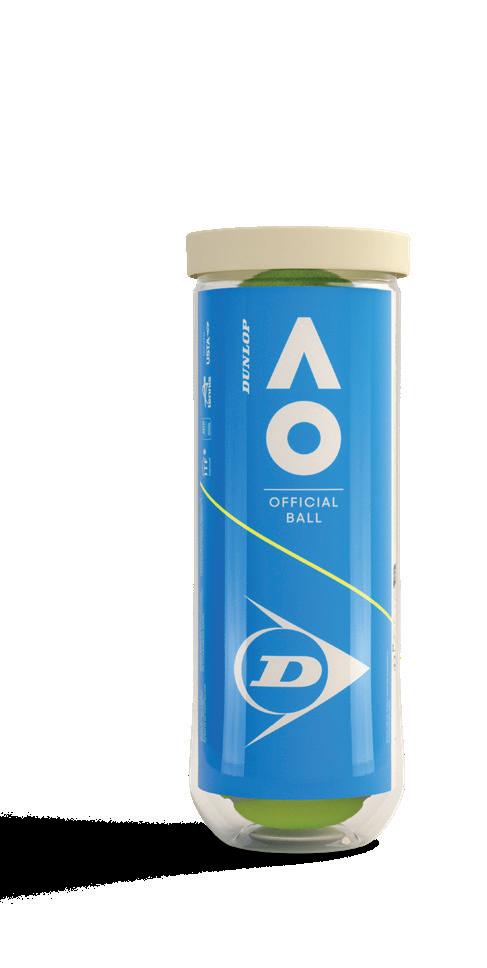


PAPER LID







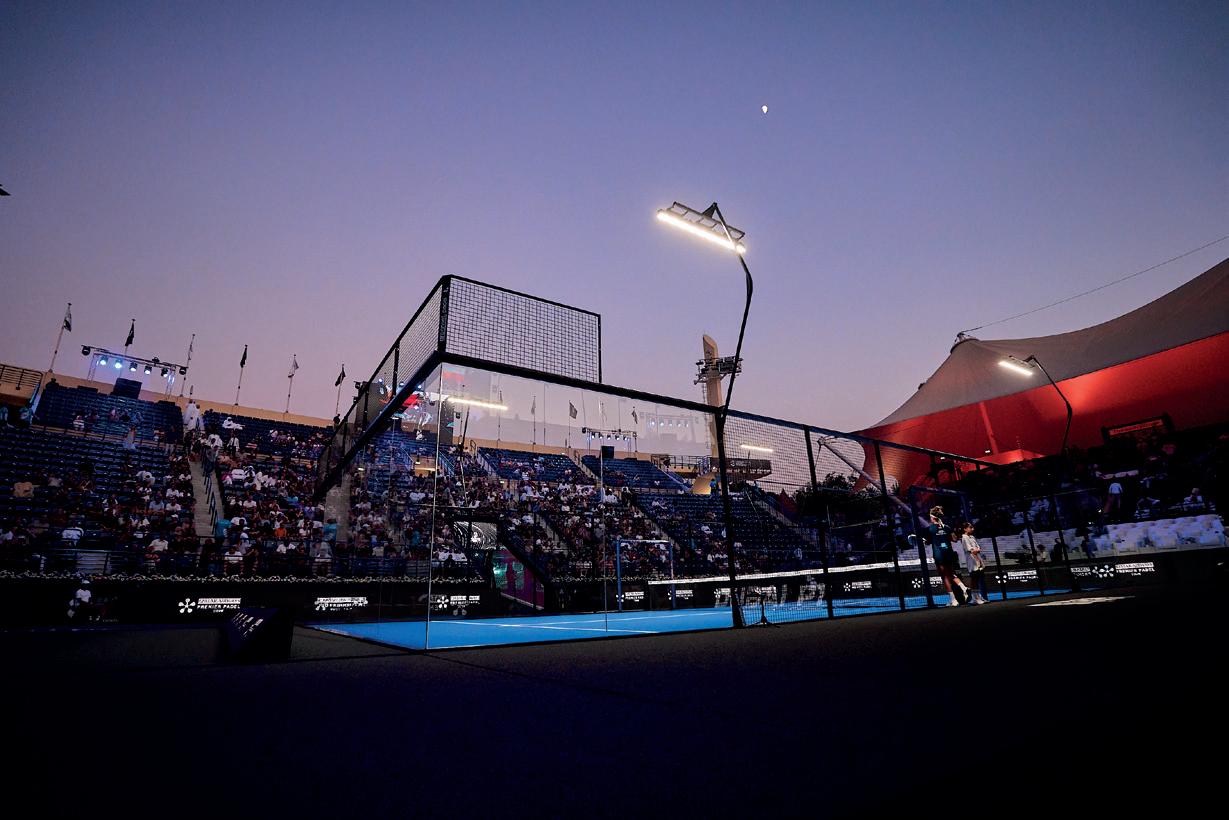







Linda Gordon | RSPA Membership Manager
WWe are just a few months away from the 2025 RSPA World Racquets Conference in beautiful Kona, Hawaii at the Outrigger Kona Resort & Spa which includes five days of amazing professional development, seminars and social events. Attending the World Conference is a unique opportunity and experience for two reasons: professional development and networking.
Professional development is of paramount importance in racquet sports for coaches, players, and even enthusiasts who want to enhance their knowledge and skills. Here are several reasons why professional development is crucial in racquet sports:
Skill development: Racquet sports are sports that require a diverse set of skills, including technical, tactical, physical, and mental abilities. Professional development helps coaches stay up-to-date with the latest techniques, strategies, and training methods to improve their overall performance and stay competitive.
integrate the latest trends into their game, enhancing their effectiveness on the court.

Tactical knowledge: Racquet sports are as much a mental game as they are physical. Learning and refining tactical knowledge through professional development enables coaches to analyze opponents’ strengths and weaknesses, develop effective game plans and make better strategic decisions during matches with their players.
Injury prevention and management: Racquet sports place considerable physical demands on the body and injuries are a common occurrence. Ongoing education provides valuable insights into injury prevention techniques, fitness training and rehabilitation strategies. This knowledge can help coaches minimize the risk of injuries for their players and manage them effectively when they do occur.

Evolving the game: Racquet sports are dynamic and constantly evolving. New playing styles, equipment advancements, rule changes, and tournament formats emerge over time. By pursuing professional development, players and coaches can adapt to these changes and

Rule updates and officiating: Racquet sports each have specific rules and regulations that evolve periodically. Staying informed about the latest rule updates through professional development ensures that players, coaches and officials have a comprehensive understanding of the game. This knowledge helps maintain fairness and consistency during matches and avoids any unnecessary penalties or disputes.
Coming together for a common cause to gain education is an organic and amazing way to network and collaborate with each other in the industry. Here are some reasons why networking is so important in racquet sports:
Knowledge sharing: Networking provides an opportunity for coaches to share their experiences, insights and knowledge with one another. Coaches can discuss different techniques, training methods and strategies that have worked well for them. This exchange of information helps coaches expand their coaching toolbox and gain new perspectives that can positively impact their coaching approach.
Problem-solving and support: Coaching can be a challenging profession, and teaching professionals often encounter various obstacles and dilemmas. Peer networking allows coaches to seek advice and support from others who have faced similar challenges. By sharing their concerns, they can receive valuable feedback, suggestions and solutions to overcome difficulties. This support system can help to navigate through coaching-related issues more effectively.
Partnerships: Networking with peers in the coaching community can lead to collaborative opportunities and

partnerships. Teaching professionals can work together on joint projects, training sessions, or even organize events. Collaborative efforts bring together diverse perspectives, strengths, and experiences, allowing coaches to create innovative coaching approaches and deliver enhanced training experiences for their players.
Mentorship and role models: Peer networking provides a chance for coaches to find mentors or role models within the coaching community. Establishing relationships with more experienced teaching professionals can be invaluable for professional development. Mentors can offer guidance, share their expertise and provide valuable insights that can accelerate a coach’s growth. Learning from respected individuals in the field helps refine their coaching skills and leadership abilities.
Community and camaraderie: Networking fosters a sense of community and camaraderie among teaching professionals. It creates a support system where coaches can connect, share their experiences, celebrate successes and empathize with challenges. Building relationships with like-minded individuals who share a passion for coaching can enhance job satisfaction, increase motivation and create a sense of belonging within the coaching profession.



Keeping up with industry trends: Networking with peers enables professionals to stay informed about the latest industry trends, research and advancements in racquet sports coaching. Through discussions and interactions, teaching professionals can learn about new training methods, technological innovations, and scientific insights that can help them improve their coaching techniques and optimize player development.
Personal growth and motivation: Engaging in professional development shows a commitment to personal growth and development. It fuels motivation, fosters a growth mindset and encourages individuals to strive for excellence in their chosen field. Whether it’s improving as a player or expanding coaching expertise, the pursuit of knowledge in racquet sports helps individuals maintain a lifelong love for the sport. Professional development and networking are essential for tennis professionals. By staying informed and continuously seeking new knowledge and experiences, teaching professionals can excel in the sport while contributing to its growth and development as well as learning, growing, and thriving in their professional careers and positively impacting the players they work with. To learn more about all the amazing opportunities at this year’s RSPA World Racquets Conference and to sign up, go to www.rspa.net.
First
Immediate

